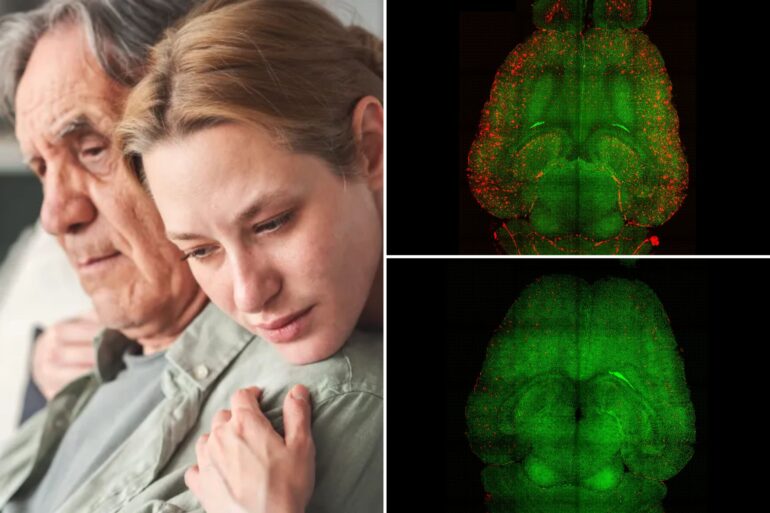🔴 Website 👉 https://u-s-news.com/
Telegram 👉 https://t.me/usnewscom_channel
Scientists have discovered what could be a breakthrough in the treatment of Alzheimer’s disease.
Over 7 million Americans are living with Alzheimer’s, which slowly erodes memory, cognitive skills and the ability to perform simple tasks.
Early attempts at treating or managing Alzheimer’s have concentrated on neurons and other brain cells. Newer approaches have been exploring how other factors contribute to the disease.
Now, a new study reveals innovative nanotechnology that restored the function of the blood-brain barrier (BBB) to reverse Alzheimer’s in mice.
Traditional nanomedicine employs nanoparticles as carriers for therapeutic molecules. For the new research, an international team of scientists utilized nanoparticles as bioactive agents in their own right.
They’re called “supramolecular drugs.”
Here’s how they work: The BBB plays a crucial role in regulating the brain’s environment by defending it against pathogens, toxins and other dangers.
Alzheimer’s is characterized by an accumulation of “waste proteins,” most notably amyloid-beta, which compromises normal neural function.
The team administered three doses of the supramolecular drugs to mice with high quantities of amyloid-beta in their brain.
“Only one hour after the injection, we observed a reduction of 50-60% in [amyloid-beta] amount inside the brain,” said Junyang Chen, first co-author of the study and a researcher at the West China Hospital of Sichuan University.
Researchers studied the mice over several months, conducting experiments, monitoring their memory decline and assessing the therapeutic effects of the supramolecular drugs.
In one such trial, a 12-month-old mouse, which is the equivalent of a 60-year-old human, was treated with nanoparticles and observed for six months.
By the end, the mouse — then aged 18 months or 90 in human years — had fully recovered and was behaving like a healthy mouse.
Researchers explain that these long-term effects come from restoring the brain’s vasculature, the extensive network of blood vessels that form the structure of the brain.
“We believe it works like a cascade: when toxic species, such as amyloid-beta, accumulate, the disease progresses,” explained study leader Giuseppe Battaglia, a research professor at the Institute for Bioengineering of Catalonia in Spain.
“Once the vasculature can function again, it starts clearing [amyloid-beta] and other harmful molecules, allowing the whole system to recover its balance.”
He noted that these nanoparticles “seem to activate a feedback mechanism that brings this clearance pathway back to normal levels.”
In essence, these supramolecular drugs act like a reset switch, initiating the process of toxic removal and effectively clearing amyloid-beta, thereby restoring balance to the vascular system that maintains healthy brain function.
“Our study demonstrated remarkable efficacy in achieving rapid [amyloid-beta] clearance, restoring healthy function in the blood–brain barrier and leading to a striking reversal of Alzheimer’s pathology,” said IBEC researcher Lorena Ruiz Perez.
The findings were published Monday in the journal Signal Transduction and Targeted Therapy.
But don’t get too excited. Human BBBs are significantly more complex than those in mice. That’s why many drug therapies for brain diseases that show promise in mice don’t work in humans.

